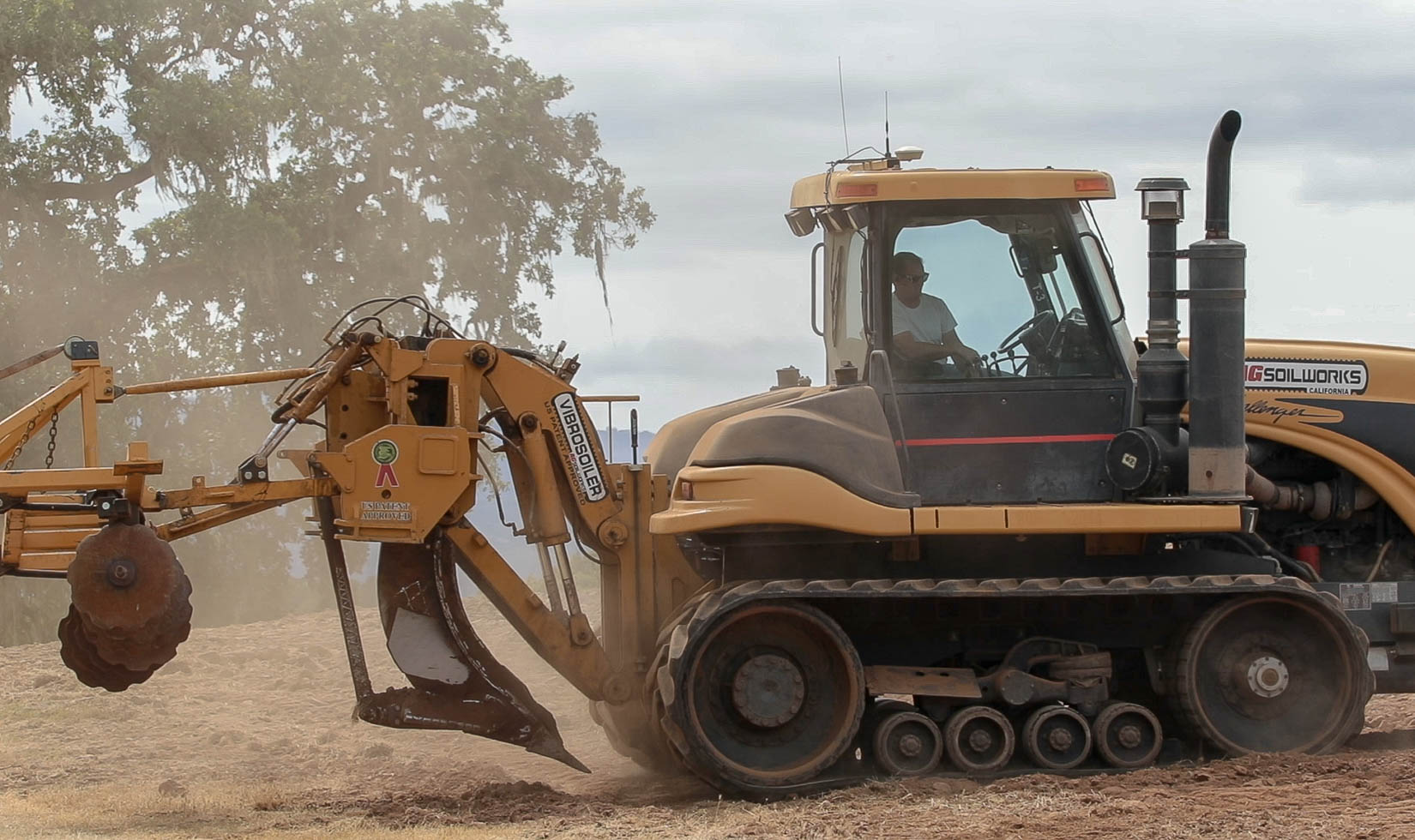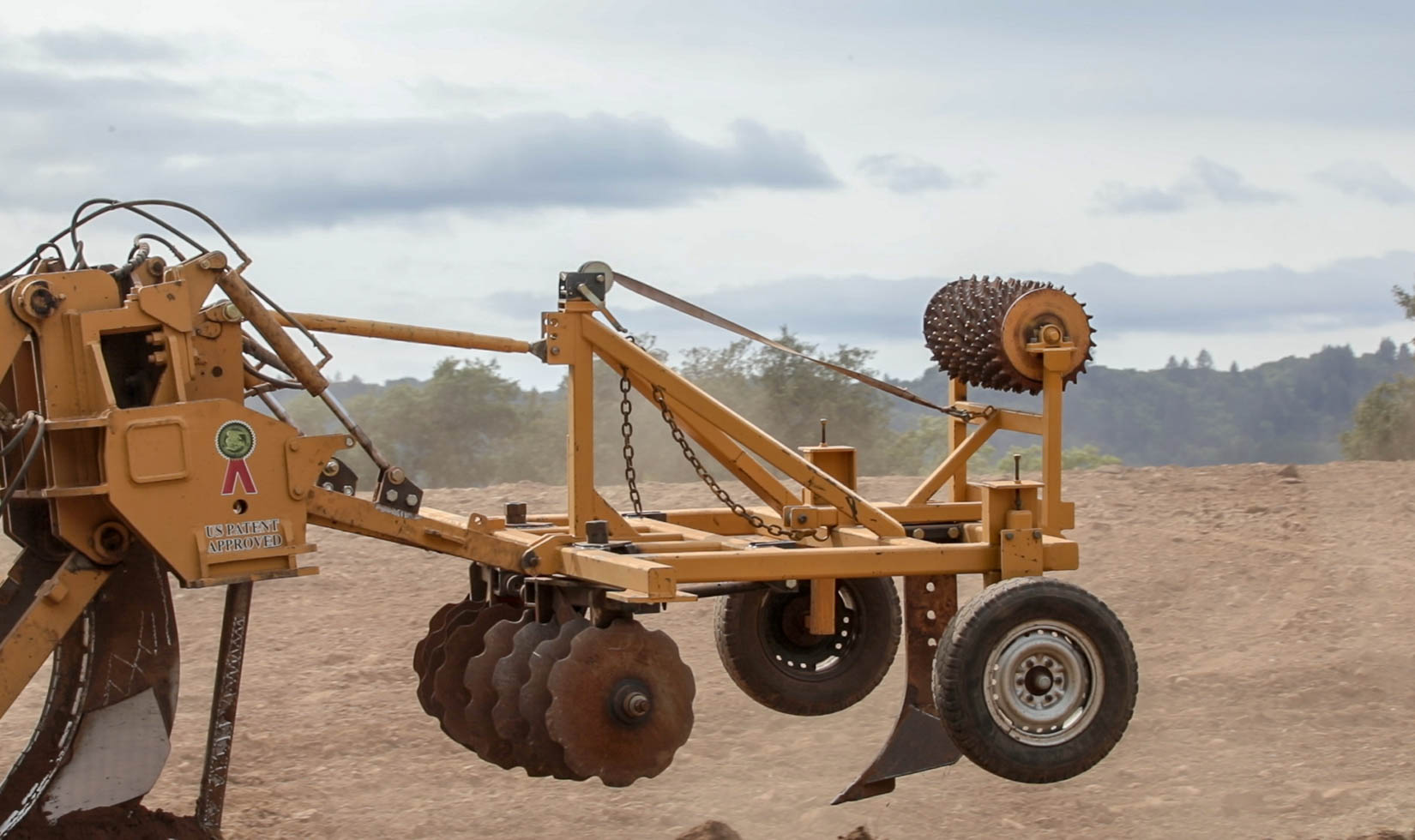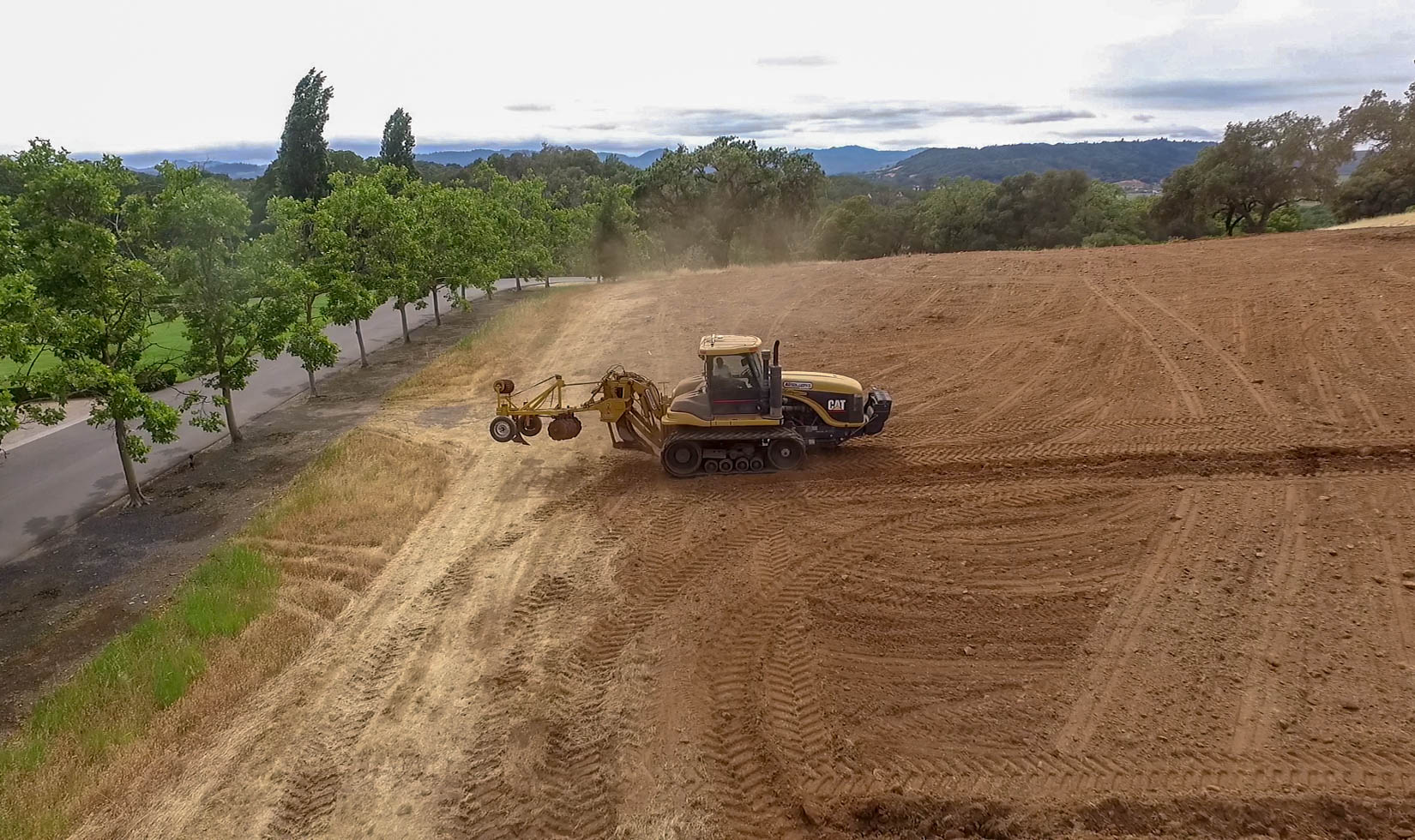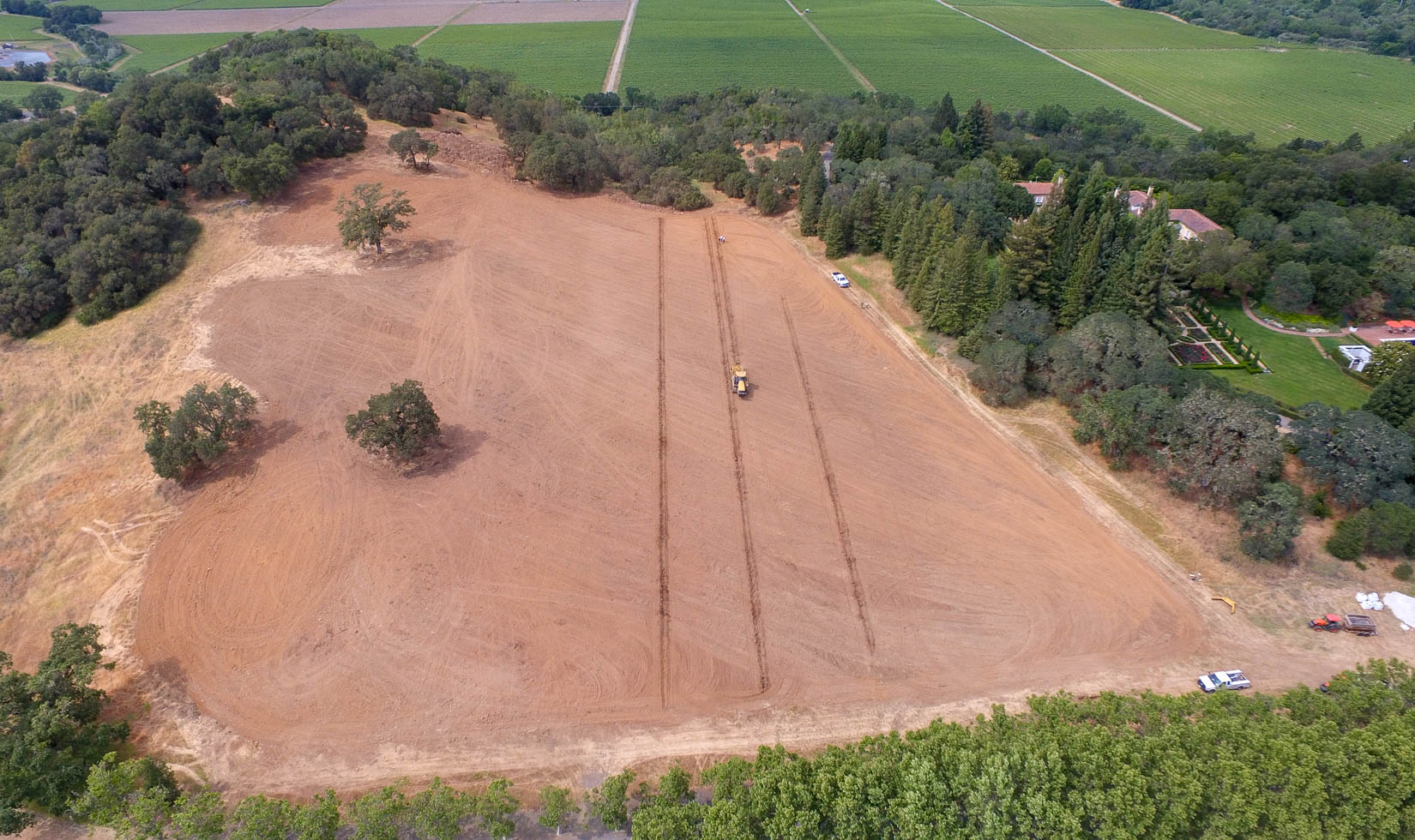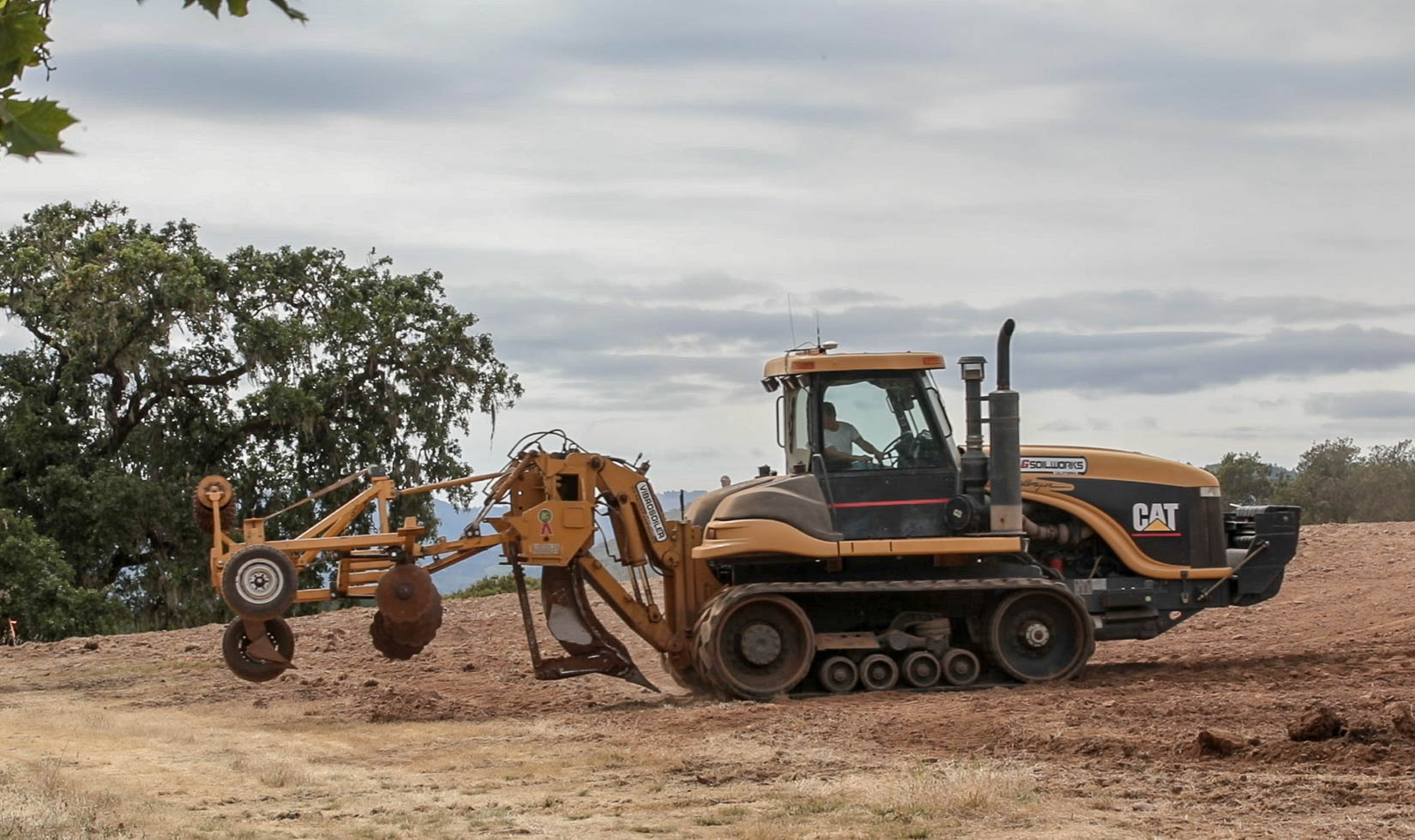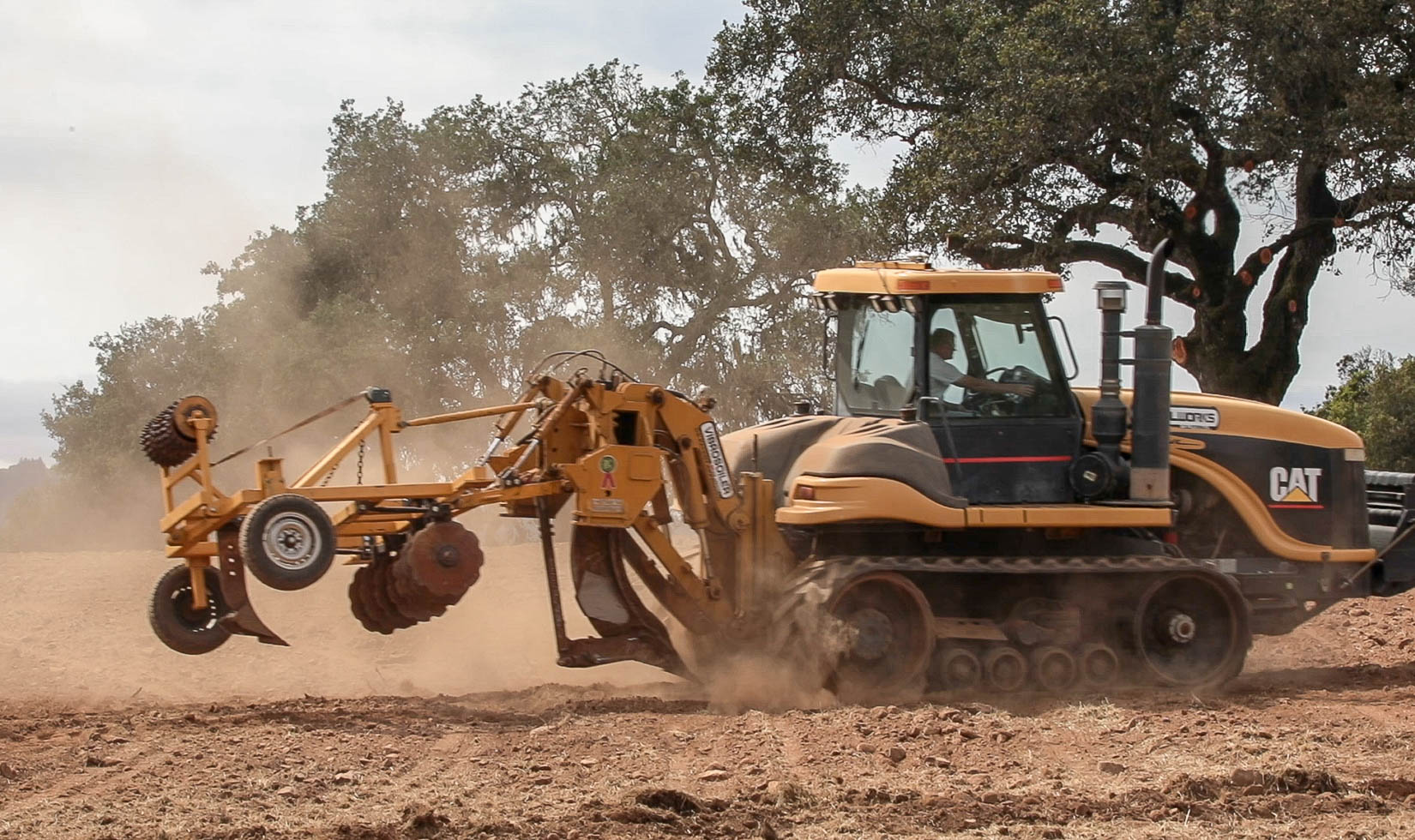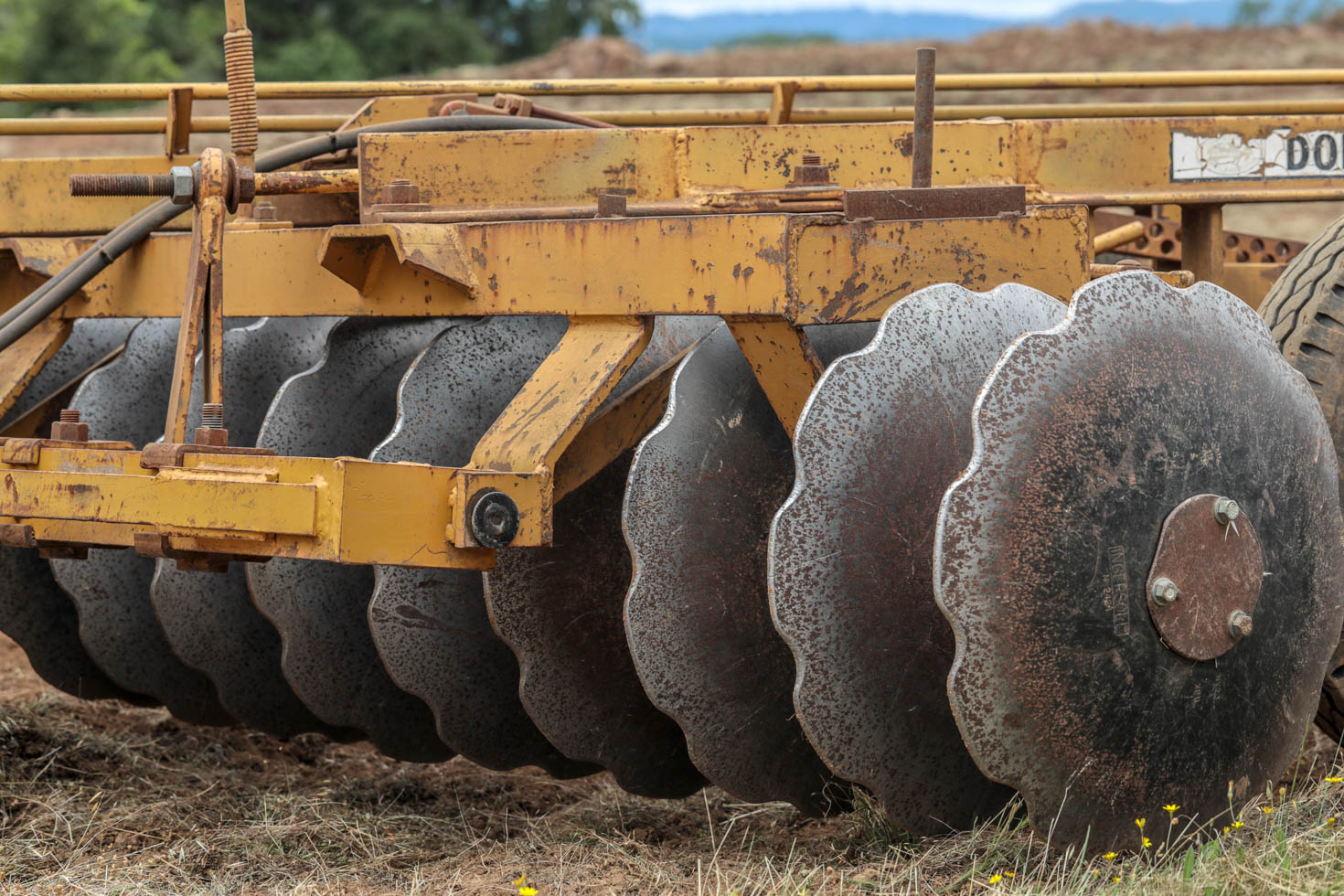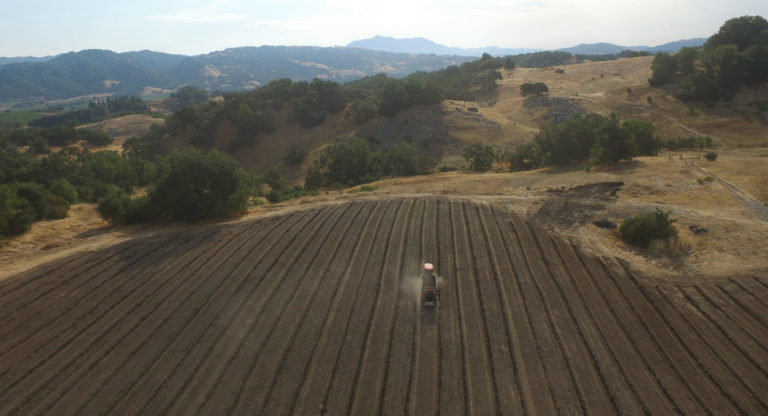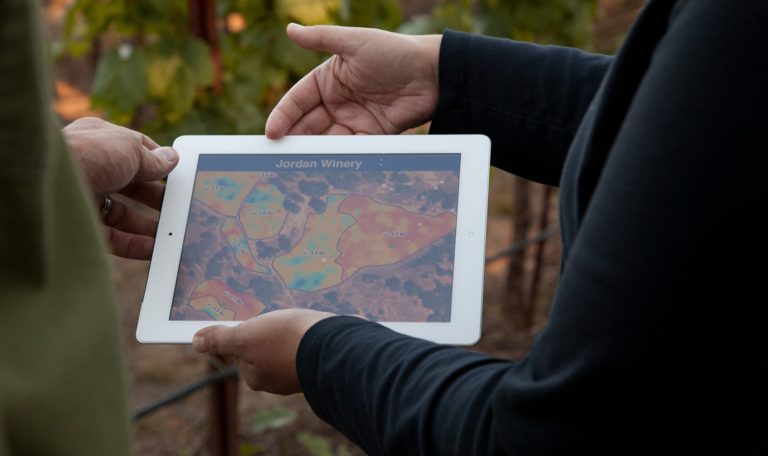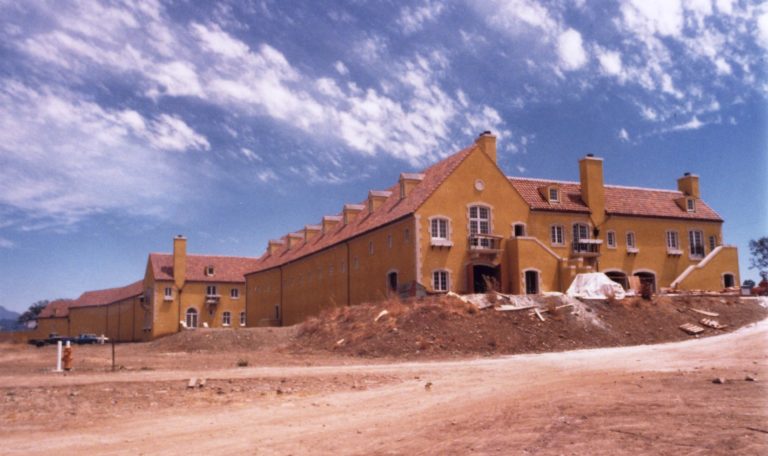Ripping is not a glamorous word, certainly not one to associate with enjoying a fine glass of wine in moderation. But our soils at Jordan Winery are getting ripped—vineyard by vineyard, block by block—over the next five years. Deep ripping is the most critical farming practice in planting new grapevines in a wine region like Alexander Valley, where the primary soil, called serpentine, is heavy in clay and rock that inhibit the vines’ ability to plunge their roots deep into the ground. Jordan is deep ripping soils across Jordan Estate as part of our seven-year project to replant every grapevine. This blog explains what ripping a vineyard is, the steps deep soil ripping entails and how ripping improves grapevine performance and thus wine quality.
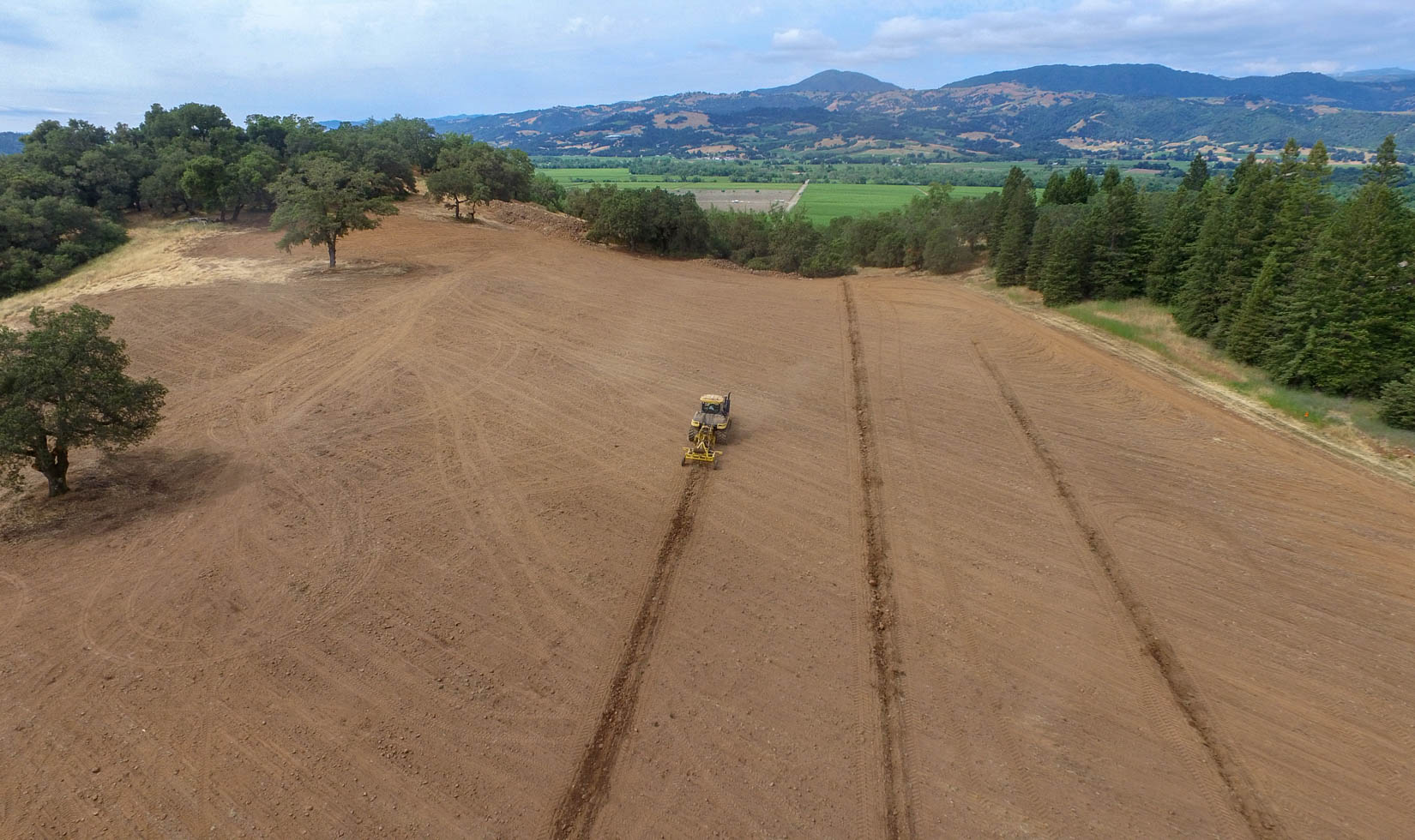
What is Deep Ripping
Deep ripping is a preparation that is done to soils before grapevines are planted. A soil ripper is basically a giant, powerful, underground tiller that helps alleviate the natural soil compaction that occurs over time from farming. Jordan Winery is utilizing the most sophisticated and technologically advanced tiller, the Vibrosoiler Ripping System by AgSoilworks California, which respects sustainable farming while providing a garden-like planting bed for the baby vines to flourish. Before a new vineyard is planted, cover crops are typically sowed to replenish the soil nutrients for 1-2 years, and then it’s time to rip. Soil ripping helps improve soil structure, soil drainability and grapevine root system depth. At Jordan Winery, soil ripping is being used for the first time both before planting a new vineyard on a site that we’ve never used to cultivate grapevines—the Chateau Block across from the winery—and after removing old grapevines that are diseased and no longer producing the quality of grapes we demand.
Soil ripping has gained momentum in the California wine business in the last 40 to 50 years. It’s modern-day popularity began in Sonoma County after winegrowers realized that their grapevines were struggling to break through some types of soils to develop a deep root system, soils that were heavy in clay and serpentine rocks.
Deep Ripping Soil Steps Before Vineyard Planting
One of the key preparations done to land before a vineyard is planted on clay-rich soils, deep soil ripping can be done in two, three or four passes of the vineyard. Jordan Winery has chosen the Patented AgSoilworks Two-Pass System, which involves the following steps:
- Choosing the right time of year to deep rip soils. The soil needs to be moist, but not too wet. Every soil is ready at a different time, however, late spring seems to be the best time for soil ripping at Jordan Winery in Sonoma County, once the chance of late-season rain has passed.
- Any boulders or large rocks are removed with a backhoe to prepare for the ripping tractor. The fewer the big rocks, the faster and more effective the ripping will be.
- A large tractor fitted with a Vibrosoiler Motioning Winged ripper (also called tines or spades) digs deep into the soil to break up the hard pan. At Jordan, our deep ripping target is four feet deep and 6 to 9 feet laterally per row.
- The tractor drives straight down the future vineyard rows that have been outlined in advance, guiding the spade to sway back and forth in the deep soils, breaking up the hard pan and knocking rocks to the sides. It’s critical that the tractor rip the soil precisely in the area where the baby grapevines will be planted, and only let his tires drive in the “wheelwork zone” away from the future site of the root zone, as the wheelwork zone will be naturally compacted by the weight of the tractor.
- For soil ripping to be fully effective, the tractor operator utilizes GPS-Autopilot accurate to one-inch, guiding the tractor and target depth of the blade. Ripping at the correct subsoil moisture content is critical for effective decompaction of soils with high clay content. This depth can range from 4 to 6 feet deep and 2 to 12 feet across, depending on which type of deep ripping system the farmer chooses. The AgSoilworks system Jordan Winery has chosen will break up the soil roughly 9 feet across.
- Compost and other supplements, such as calcium sulfate, are applied to give the soil any nutrients it might be lacking.
- A tractor fitted with a patented twin ripper and a roller will come through and rip the compost deep into the soil. Vineyard stakes and irrigation lines can then be installed—the final steps before baby grapevines are planted in the ground.
- The soil ripping process takes about one hour per acre to complete and costs about $350 to $650 per acre.
As soon as the deep ripping is complete, the grapevines can be planted immediately. Although deep ripping can be done in as many as four passes, we prefer to focus on sustainability and only rip twice because every time a big tractor drives over the ground, it’s re-compacting the soil.
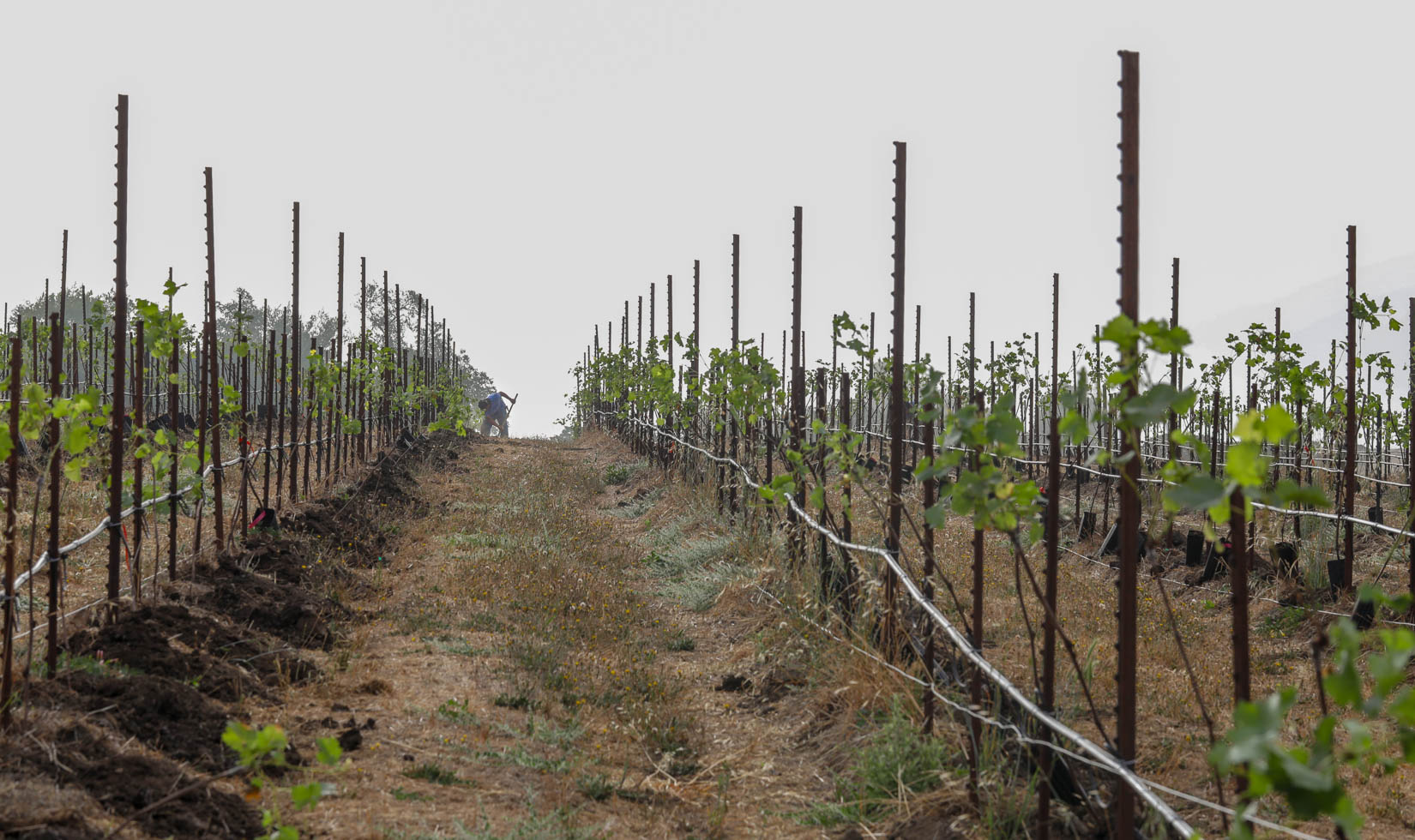
How Deep Ripping Soil Helps Grapevines
This deeper and wider form of soil tilling and amending will increase uniformity and fertility giving the newly planted grapevine the best opportunity for developing deep root systems, which help them access more water and more nutrients and better weather heat waves and other climatic events. The work is completed by a farming consultant, AgSoilWorks, who has developed these patented technologies in conjunction with leading international soil scientists. Essentially, what we’re doing when we rip is developing the most optimum soil for farming the highest quality grapes through improved soil moisture and texture.
The goal of soil ripping is simple: to create a uniform soil structure where the plant’s root zone will live. To achieve a uniform root zone, ripping must be employed continuously along the future row where the grapevines will be planted. Uniformity of soil drainability and texture helps lead to uniformity of leaf and fruit growth, which is critical for wines like Jordan, where balance and elegance in the wine’s fruit, acidity, tannin and alcohol can only be achieved by starting with uniform grapes that reach their ripeness without excessive sugar levels or dehydration.
Grape growers who invest in soil ripping before planting a vineyard also do so because it’s been found to help new vineyards become stronger, healthier and live longer due to their improved ability to develop a deep, focused root system. The roots of vines from a deep-ripped soil have been found to stretch 4-6 feet deeper than compacted soils that have not been ripped. Jordan first planted grapevines on the estate in 1996, after the phylloxera root louse devastated our first estate vineyard on the valley floor, which was planted in the early 1970s. As mentioned in our blog about why we began replanting the entire Jordan Estate in 2016, it was frustrating that our estate grapevines were only productive for 20 years, and that some vineyard blocks started to decrease in performance after just eight years. By investing in soil ripping before we replant, we hope to double the life expectancy of our grapevines. It’s another way to look at sustainability as a small business. Sustainability is more than using eco-friendly farming techniques that have a gentle touch on the land. It’s sustaining the life of a grapevine as long as possible, giving it the best chance to be healthy and happy in the ground—and yield quality wine grapes for decades, so that our investment in the planting pays for itself.
Ripping technology has another benefit that is very attractive to grape growers. Due to historic drought conditions in recent years and limited availability of water resources, we are constantly looking for ways to conserve water. The patented twin ripper with roller acts as a “water harvester,” opening the soil and increasing water and nutrient uptake into the root zone—the place where the plant needs it most.
But soil ripping won’t be totally effective without adding soil amendments. After the first pass in deep soil ripping, the future site of the vineyard is prepped by sprinkling nutrients on the recently ripped soils—amendments such as gypsum (a type of calcium) and compost, which are tilled into the decompacted soil. These nutrients are needed for the common serpentine soil and other heavy clay soils found in parts of Alexander Valley. This challenging soil profile is one of the reasons why we have chosen to only plant a maximum of about 120 acres of grapevines on select hillsides across the nearly 1,200-acre Jordan Estate—those hillsides with the least amount of serpentine rock that require the least amount of supplements in vitamins and nutrients. (Our blog post about soil-mapping digs deeper into precision farming by soil type.)
The benefits of deep ripping usually last for about three years but can last more than a decade with proper soil maintenance, organic matter incorporation and controlled traffic.
Scroll down and subscribe to our blog for a biweekly digest on what’s happening at Jordan, including the vineyard replant progress.
